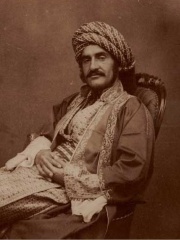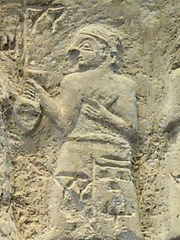

The Most Famous
ARCHAEOLOGISTS from Iraq
This page contains a list of the greatest Iraqi Archaeologists. The pantheon dataset contains 151 Archaeologists, 2 of which were born in Iraq. This makes Iraq the birth place of the 11th most number of Archaeologists behind Denmark, and Australia.
Top 2
The following people are considered by Pantheon to be the most legendary Iraqi Archaeologists of all time. This list of famous Iraqi Archaeologists is sorted by HPI (Historical Popularity Index), a metric that aggregates information on a biography's online popularity.

1. Hormuzd Rassam (1826 - 1910)
With an HPI of 60.57, Hormuzd Rassam is the most famous Iraqi Archaeologist. His biography has been translated into 19 different languages on wikipedia.
Hormuzd Rassam (Syriac: ܗܪܡܙܕ ܪܣܐܡ; Arabic: هرمز رسام; 1826 – 16 September 1910) was an Assyriologist and author. He is known for making a number of important archaeological discoveries from 1877 to 1882, including the clay tablets that contained the Epic of Gilgamesh, the world's oldest notable literature. He is widely believed to be the first-known Middle Eastern and Assyrian archaeologist from the Ottoman Empire. He emigrated to the United Kingdom, where he was naturalized as a British citizen, settling in Brighton. He represented the government as a diplomat, helping to free British diplomats from captivity in Ethiopia.

2. Akurgal (2600 BC - 2500 BC)
With an HPI of 55.91, Akurgal is the 2nd most famous Iraqi Archaeologist. His biography has been translated into 17 different languages.
Akurgal (Sumerian: 𒀀𒆳𒃲, "Descendant of the Great Mountain" in Sumerian; fl. c. 2460 BC) was the second king (Ensi) of the first dynasty of Lagash. His relatively short reign took place in the first part of the 25th century BCE, during the period of the archaic dynasties. He succeeded his father, Ur-Nanshe, founder of the dynasty, and was replaced by his son Eannatum. Very little is known about his reign: only six inscriptions mention it. One of them reports that he built the Antasura of Ningirsu. During his reign, a border conflict pitted Lagash against Umma, These borders between Umma and Lagash had been fixed in ancient times by Mesilim, king (lugal) of Kish, who had drawn the borders between the two states in accordance with the oracle of Ishtaran, invoked as intercessor between the two cities. Akurgal is mentioned fragmentally in an inscription on the Stele of the Vultures, describing the conflict of Akurgal with Lagash, possibly with Ush, king of Umma: "Because of […] the man of Umma spoke arrogantly with him and defied Lagash. Akurgal, king of Lagash, son of Urnanshe […]". In all likelihood Akurgal lost part of the territory of Lagash to the ruler of Umma. He had two sons, who both became important rulers of Lagash after him, Eannatum and Enannatum I, and successfully repelled Umma's encroachment.
People
Pantheon has 2 people classified as Iraqi archaeologists born between 2600 BC and 1826. Of these 2, none of them are still alive today. The most famous deceased Iraqi archaeologists include Hormuzd Rassam, and Akurgal.

